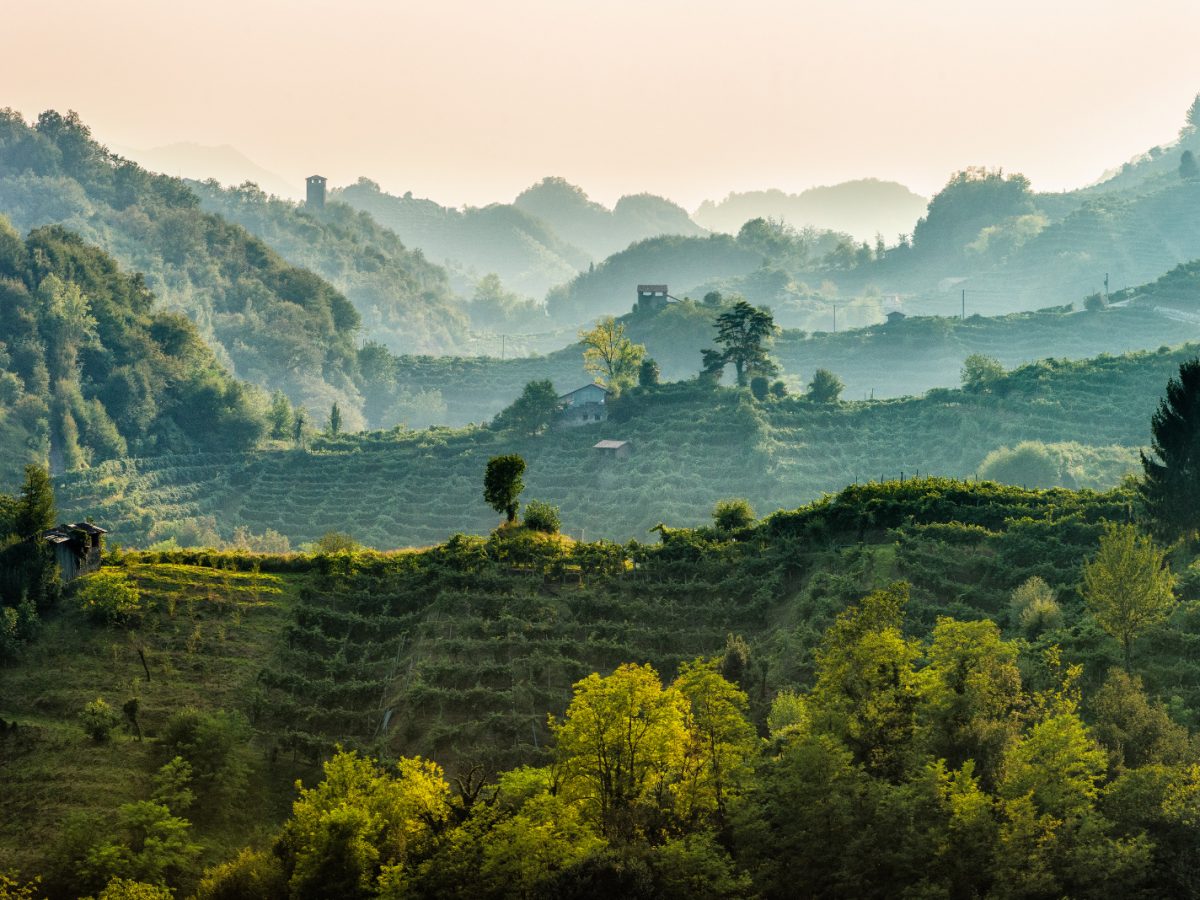The Colline del Prosecco di Conegliano e Valdobbiadene in northeast Italy is an area characterised by distinctive hogback morphological system which provides a distinctive mountain character with scenic vistas, and an organically evolved and continuing landscape comprised of vineyards, forests, small villages and agriculture. For centuries, the harsh terrain has both shaped and been adapted by distinctive land use practices. They include the land and soil conservation techniques that comprise the viticultural practices using Glera grapes to produce the highest quality Prosecco wine. The mosaic appearance of the landscape is a result of historical and ongoing environmental and land use practices. The plots dedicated to vineyards, established on ciglioni, coexist with forest patches, small woodlands, hedges, and rows of trees that serve as corridors connecting different habitats. In the hogbacks, small villages are scattered along the narrow valleys or perched on the crests.
The Colline del Prosecco di Conegliano e Valdobbiadene
Criterion (v): The Colline del Prosecco di Conegliano e Valdobbiadene is a viticulture landscape resulting from the interaction of nature and people over several centuries. The adaptation and transformation of the challenging terrain of the hogback geomorphology has required the development of specific land use practices, including: vineyard management by hand on steep slopes; the grassy terraces known as ciglioni, which follow the contours of the land, stabilising the soils and vineyards; and the bellussera training system which was developed in the area about 1880. As a result, the vineyards contribute to a distinctive ‘chequerboard’ appearance with perpendicular rows of high vines, interspersed with rural settlements, forests and small woods. Despite many changes, the history of sharecropping in this area is also reflected in the landscape patterns.
Document
-
Documentazione
-
Documentazione
-
Documentazione
-
Mappa
-
Sito


